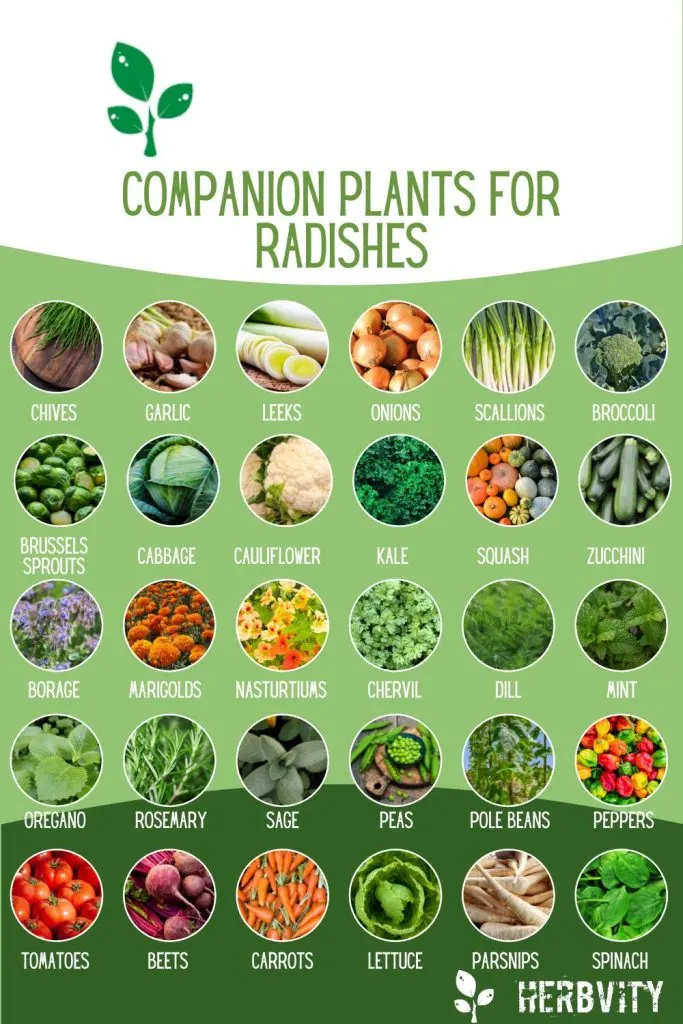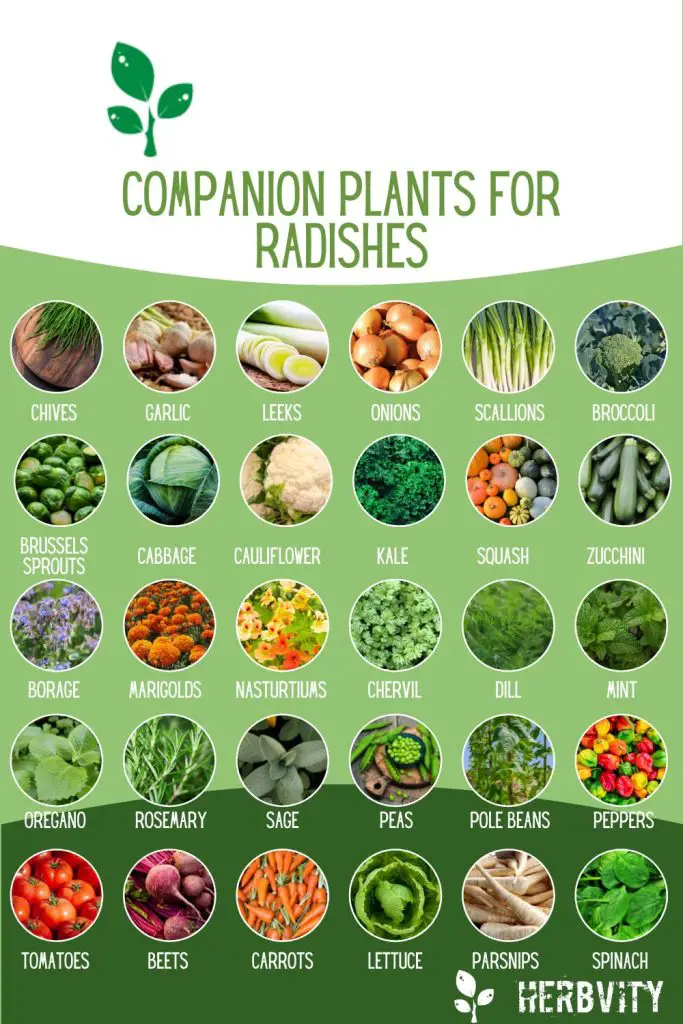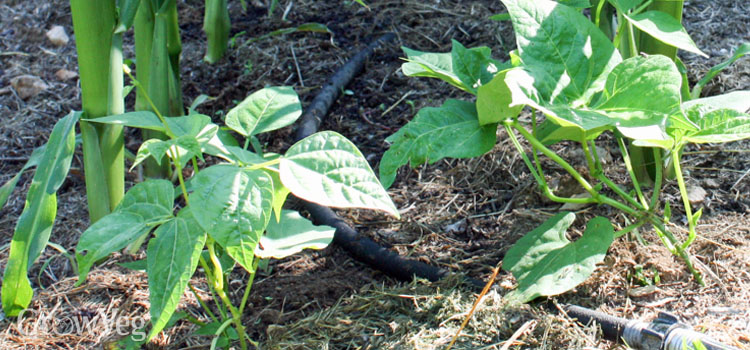Radish Companion Plants That Will Help Your Garden Thrive
Radish Companion Plants That Will Help Your Garden Thrive
Radishes are a cool-season crop that are easy to grow and can be enjoyed in a variety of dishes. They are also a good source of vitamins and minerals, making them a healthy addition to any diet.
One of the best ways to ensure a successful radish harvest is to plant them with companion plants. Companion planting is the practice of planting different types of plants together in order to benefit each other. There are many different companion plants that can be grown with radishes, each with its own unique benefits.
In this blog post, we will discuss some of the best radish companion plants. We will also discuss the benefits of companion planting and how to choose the right companion plants for your garden.
Benefits of Companion Planting
There are many benefits to companion planting. Some of the most common benefits include:
- Attracting beneficial insects: Companion plants can attract beneficial insects, such as pollinators and predators of pests. This can help to control pests in your garden naturally.
- Distracting pests: Some companion plants can distract pests from your radishes. For example, marigolds are known to repel pests such as aphids and beetles.
- Improving soil quality: Companion plants can help to improve soil quality by adding nutrients, breaking up compacted soil, and suppressing weeds.
- Maximizing space: Companion planting can help you to maximize the space in your garden by planting different types of plants together. This can help you to grow more food in a smaller space.
Choosing Companion Plants for Radishes
When choosing companion plants for radishes, there are a few things to keep in mind. First, you want to choose plants that have similar growing requirements. Radishes do best in cool, moist soil, so you want to choose companion plants that also prefer these conditions.
Second, you want to choose plants that will benefit each other. For example, radishes can help to attract beneficial insects, while marigolds can help to repel pests.
Finally, you want to choose plants that will look good together. If you are growing radishes in a container or a small space, you want to choose companion plants that will complement each other's colors and textures.
Some of the Best Radish Companion Plants
Here are some of the best radish companion plants:
- Marigolds: Marigolds are a popular companion plant for radishes because they help to repel pests. They also add color and texture to the garden.

- Nasturtiums: Nasturtiums are another good companion plant for radishes. They help to attract beneficial insects and deter pests. They also have edible flowers that can be used in salads or sandwiches.

- Brassicas: Brassicas, such as broccoli, Brussels sprouts, and kale, are good companion plants for radishes because they help to improve soil quality. They also add nitrogen to the soil, which can benefit radishes.

- Peas: Peas are a good companion plant for radishes because they help to fix nitrogen in the soil. This can benefit radishes, as well as other plants in the garden.

- Dill: Dill is a good companion plant for radishes because it helps to attract beneficial insects. It also has a strong aroma that can help to deter pests.

- Chervil: Chervil is a good companion plant for radishes because it helps to improve soil quality. It also has a mild flavor that can complement the taste of radishes.

- Pole beans: Pole beans are a good companion plant for radishes because they help to provide shade. This can help to protect radishes from the hot sun, which can cause them to bolt.

Conclusion
Companion planting is a great way to improve the health and productivity of your garden. By planting radishes with the right companion plants, you can attract beneficial insects, deter pests, improve soil quality, and maximize space.
If you are new to companion planting, start by planting radishes with some of the plants listed above. You will be surprised at how well they do together.
Radishes are a delicious and versatile vegetable that can be grown in a variety of climates. But did you know that there are certain plants that can help radishes grow even better? That's right, companion planting is a great way to improve the health and productivity of your radishes.
Some of the best companion plants for radishes include:
- Lettuce: Lettuce helps to suppress weeds and pests, and it also provides shade for the radishes, which can help them to stay cool and prevent them from bolting.
- Carrots: Carrots help to improve the flavor of radishes, and they also help to deter pests.
- Onions: Onions help to repel pests and diseases, and they also help to improve the texture of radishes.
- Peas: Peas help to add nitrogen to the soil, which can help radishes to grow faster and healthier.
- Herbs: Herbs like dill, mint, and oregano can help to deter pests and diseases, and they can also add flavor to radishes.
If you're interested in learning more about radish companion planting, I recommend visiting Gardenia Inspiration. This website has a wealth of information on the subject, including lists of good and bad companion plants, as well as tips on how to plant and care for radishes.
FAQ of radish companion plants
Q: What are the best companion plants for radishes?
A: Radishes are a cool-season crop that grows quickly, so they are a good choice for intercropping with other vegetables that have longer growing seasons. Some good companion plants for radishes include:
- Lettuce: Lettuce is a slow-growing crop that does not shade out radishes. It also helps to suppress weeds and attract beneficial insects.
- Peas: Peas are another good choice for intercropping with radishes. They help to fix nitrogen in the soil, which benefits both plants.
- Carrots: Carrots and radishes have different root systems, so they do not compete for space. They also help to repel pests from each other.
- Tomatoes: Tomatoes and radishes can be planted together, but they should be planted at different times. Radishes should be planted first, as they will mature quickly and be harvested before the tomatoes start to grow.
- Basil: Basil is a good companion plant for many different vegetables, including radishes. It helps to repel pests and improve the flavor of radishes.
Q: What are the worst companion plants for radishes?
A: There are a few plants that should not be planted near radishes, as they can compete for nutrients or water. These include:
- Cabbage: Cabbage and radishes are both members of the Brassica family, so they can compete for nutrients.
- Onions: Onions can release chemicals that inhibit the growth of radishes.
- Garlic: Garlic can also release chemicals that inhibit the growth of radishes.
- Potatoes: Potatoes and radishes can both attract the same pests, so it is best to avoid planting them near each other.
Q: How do radishes benefit other plants?
A: Radishes can benefit other plants in a number of ways. They help to:
- Attract beneficial insects: Radishes attract beneficial insects, such as ladybugs and hoverflies, which help to control pests.
- Suppress weeds: Radishes have a shallow root system, so they help to suppress weeds.
- Fix nitrogen in the soil: Radishes are legumes, which means that they can fix nitrogen in the soil. This benefits other plants that need nitrogen, such as tomatoes and peppers.
Q: How do I plant radishes with companion plants?
A: When planting radishes with companion plants, it is important to choose plants that have different root systems and that do not compete for the same nutrients. It is also important to plant the plants at the same time, or at least close together in time. Here are some tips for planting radishes with companion plants:
- Plan ahead: When planning your garden, choose plants that will have different maturity dates. This will allow you to harvest the radishes before the other plants start to grow.
- Space the plants correctly: Radishes need about 2 inches of space between each plant. Other plants may need more or less space, so be sure to check the plant spacing requirements before planting.
- Water regularly: Radishes need regular water, especially during hot weather. Be sure to water the plants deeply, so that the water reaches the roots.
Image of radish companion plants
- Radish and lettuce: Radishes and lettuce are both cool-season crops that grow well together. The radishes mature quickly, so they won't shade out the lettuce. The lettuce also helps to suppress weeds, which can be a problem for radishes.

- Radish and peas: Radishes and peas are both nitrogen-fixing plants, which means they add nitrogen to the soil. This can benefit both plants, as nitrogen is an important nutrient for plant growth.

- Radish and tomatoes: Radishes and tomatoes can be planted together, as the radishes will mature quickly and be harvested before the tomatoes start to shade them out. The radishes can also help to attract pests away from the tomatoes.
- Radish and carrots: Radishes and carrots can be planted together, as they have different root systems. The radishes have a taproot, while the carrots have a more fibrous root system. This means that they won't compete for resources and can both thrive.

- Radish and herbs: Radishes can be planted with a variety of herbs, such as chives, dill, and parsley. These herbs help to deter pests and diseases, which can be a problem for radishes.

Post a Comment for " Radish Companion Plants That Will Help Your Garden Thrive"